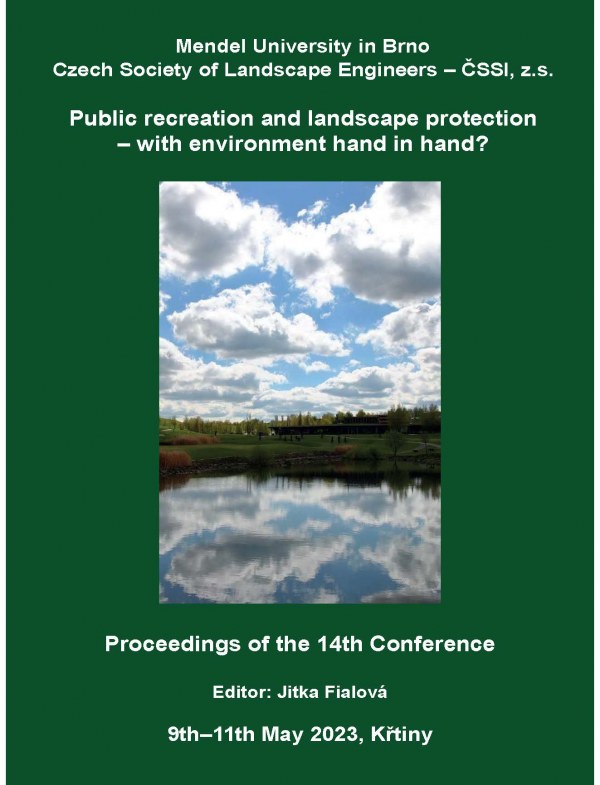
DOI: 10.11118/978-80-7509-904-4-0009
ADOLESCENTS’ SMARTPHONE USAGE IN ACTIVE RECREATION AND NATURAL ENVIRONMENT
- Stanislav Azor, Michal Marko, Štefan Adamčák
In today’s society, smartphone usage in active recreation (natural environment) is somewhat controversial because some believe that smartphones promote an access to resources; however, some believe that smartphones distract attention from environment; therefore, the present study aims at determining adolescents’ smartphone usage in active recreation and natural environment. An instrument of survey (non-standardized) was carried out six months (January – June, 2022) through an intentional sampling of survey group size of 2108 (100%) adolescent boys and girls: (i) Urban adolescent boys and girls (42.50%, n = 896); (ii) Rural adolescent boys and girls (57.50%, n = 1212), aged 18.50 ± .40 years. Statistics (e.g., descriptive, inferential) was used to analyze and compare the data. When considering the adolescents’ smartphone usage, on average, 45.00% (n = 949) of survey group spent 1 – 3 hours of using smartphones and about 38.32% (n = 808) of survey group spent time using smartphones in active recreation (natural environment). About 4.80% (n = 102) of survey group spent time using specific, recreation apps (e.g., Geocaching, GeoCaches). Increasing the physical activity is necessary; therefore, smartphone usage (recreation apps) may increase time spent in active recreation and influence physical activity levels of adolescents.
Keywords: Adolescence, Nature, Physical Activity, Recreation, Smartphones
pages: 9-13, Published: 2023, online: 2023
References
- Adams, W. (2019). Geographies of Conservation II: Technology, Surveillance and Conservation by Algorithm. Prog. Hum. Geogr., 43(2): 337-350.
 Go to original source...
Go to original source... - Andrade, C. (2020). Limitations of Online Surveys. Indian J. Psychol. Med., 42 (6): 575-576.
 Go to original source...
Go to original source... - Arts, I., Fischer, A., Duckett, D.,Van Der Wal, R. (2021). Information Techno-logy and the Optimisation of Experience - The Role of Mobile Devices and So-cial Media in Human-Nature Interactions. Geoforum., 122(1): 55-62.
 Go to original source...
Go to original source... - Arundel, L., Salmon, J., Timperio, A., Sahlqvist, S., Uddin, R., Veitch, J., Brown, H., Ridgers, N., Parker, K. (2022). Physical Activity and Active Recreation Be-fore and During Covid-19: Our Life at Home Study. J. Sci. Med. Sport., 25(3): 235-241.
 Go to original source...
Go to original source... - Bolliger, D., McCoy, D., Kilty, T., Shepherd, C. (2020). Smartphone use in Out-door Education. Question of Activity Progression and Place. J. Adventure Educ. Outdoor Learn., 21(1): 1-14.
 Go to original source...
Go to original source... - Darko, M., Kleib, M.,Olson, J. (2022). Social Media Use for Research Partici-pant Recruitment: Integrative Literature Review. J. Med. Internet Res., 24(8): e3 8015.
 Go to original source...
Go to original source... - Dickson, T. If the Outcome is Predictable, is it an Adventure? Being in, not Barri -caded from, the Outdoors. World Leis. J., 46(4): 48-54.
- Ihamaki, J. (2012). Geocaching: Interactive Communication Channels Around the Game. Eludamos J. Comput. Game Cult., 6(1): 133-152.
 Go to original source...
Go to original source... - Juško, V., Azor, S.,Kostúr, A. (2021). Design of Educational Hiking Trial. In: Pub -lic Recreation and Landscape Protection. Brno, Czechia, 10-11 May, 2021.
- Michalakis, V., Vaitis, M.,Klonari, A. (2020). Development of an Educational Outdoor Adventure Mobile App. Educ. Sci., 10(12): 382.
 Go to original source...
Go to original source... - Schneider, J.,Jadczaková, V. (2016). Mutual Impacts of Geocaching and Na-tural Environment. Acta Univ. Agric. et Silvic. Mendelianae Brun., 65(4): 1739-1748.
 Go to original source...
Go to original source... - Turhan, N. (2020). Karl Pearson's Chi-Square Tests. Educ. Res. Rev., 15(9): 57 5-580.
 Go to original source...
Go to original source... - Winter, P., Selin, S., Cerveny, L., & Bricker, K. (2020). Outdoor Recreation, Na-ture-Based Tourism, and Sustainability. Sustain., 12(1): 81.
 Go to original source...
Go to original source...


